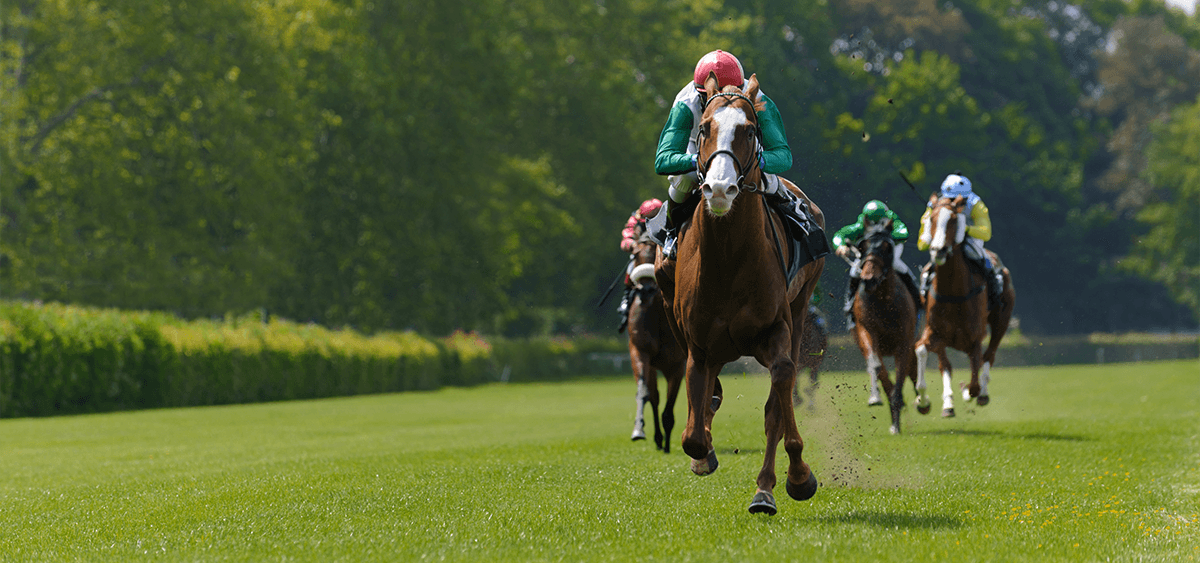
- Continuous could be supplemented into the Arc after St Leger win
- History against O’Brien trained colt
- How long can horses hold peak form?
Continuous, the winner of the St Leger, looks set to be supplemented into the field for the Prix de l’Arc de Triomphe. The Aiden O’Brien trained colt has registered one of the highest Timeform performance ratings among St Leger winners in recent years. However, history is very much against him emerging victorious in Paris.
Continuous in superb form but he will have to make history in Paris if he is to win the Arc
Continuous romped to an emphatic two-and-three-quarter-length victory over Arrest, scoring him a Timeform rating of 124. This marks him out as an above-average winner of the race. The ten-year average winning performance rating is consistently between 121 and 122.
No St Leger winner in history has gone on to win the Prix de l’Arc de Triomphe in the same year – a feat that even the incredible Triple Crown winner Nijinsky failed to achieve in 1970.
Of the nine this century who attempted to double up only Hurricane Lane and Kingston Hill (fourth behind Treve in 2014) managed to hit the frame.
The only St Leger winners in the last 10 years who had a higher Timeform performance rating than Continuous (124) were Kew Gardens (127) and Hurricane Lane (126). Both of those went on to compete in the Arc.Hurricane Lane was a close-up third behind Torquator Tasso while Kew Gardens ran well but was eventually unplaced behind Enable.
In addition, due the way the dates have fallen this year there are only 15 days between the two races, rather than the usual 22. This could prove to be a disadvantage for Continuous in terms of recovery, but some may feel that the shorter gap will enable him to hold is good form after reaching a peak at Doncaster.
How long can horses stay in top form for?
Fitness plays a huge role in horse racing, but comparatively few punters really understand how to assess this.
Trainers will try to bring horses to a peak for specific races
Horse racing is, in effect, a competition between athletes, but equine athletes. And just like human athletes, horses need to be fit for purpose in order to perform well. Obviously horses are sometimes entered for races when they are not in the right sort of condition to produce a top performance. Everyone accepts this, horses, just like human athletes, often need a race to bring their fitness on. However, this means that simply studying the form can sometimes be misleading to bettors. Just like humans in athletics, lower class racehorses in peak physical condition will often beat a higher quality horses which aren’t in good condition.
Trainers will often plan to have horses in top form for a certain point of the season. It is next to impossible for a horse to be on top form all year round. And if they were, they would probably spend the next 12 months suffering from fatigue. Trainers will aim to build up a horse’s fitness, have a period where they will be competing in the races which are important to them (where they will hopefully be in form) and then a period of rest and recuperation where, inevitably, fitness will be lost. If a horse hits its peak and performs well in the races that were part of the plan, then owners and trainers might try to keep them going for a little longer if there is another big race coming up. Sometimes this will lead to a horse running tired and, therefore, appearing to underperform.
How can you assess a horse’s fitness?
When looking at results and studying previous form, we can see that roughly 80% of horses who won had their previous race within the previous month. More than approximately 60% have not raced further back than 21 days. Therefore, there is a balance to be hit between a horse being well trained and used to racing and a horse being tired after a previous performance. Of course, like humans all horses are different. You get some human distance runners who thrive upon competing three times per month, whereas others need to race more sparingly. There will be an element of this with horses.
Statistics tell us that most horses having their first run after a spell of not racing are not fit. At their second start, they are closer to winning condition and by the third run they could be hitting form. On average a horse may need three races before they can be in winning condition.
Recent performances will give a good indication as to a horse’s fitness. Studying these closely help punters decide whether a horse is improving and getting close to its best or whether they are on the way down after peaking.
Once a horse has reached the summit of its fitness, I would suggest that the average horse will hold this peak for three races, depending on the length of time between each race, and then begin dropping off. All horses have subtle individual differences, but they will all require a period of time to develop fitness and then sharpen up before hitting their optimum form and then, as they decline, beginning the cycle again with a rest. With top trainers you will see a pattern emerge and may be able to predict when a horse will be ready to perform well.
So, to sum up, firstly, you can usually assume that if a horse is resuming after a spell out, it will not be fit. It will have just started to increase fitness.. Secondly, once a horse has had its first race back it is likely to need at least one or two more runouts before striking top form. Once it is in form it will hold that form for three, maybe four, runs before beginning an inevitable fall-off in fitness and form.
So what does this mean for St Leger and the Arc?
The double of the St Leger Stakes and the Prix de l’Arc de Triomphe is clearly a difficult one to pull off. Many of the top three-year-olds that compete in the Guineas and the Derby in their classic season, tend to miss the third leg of the Triple Crown (The Leger) to have a go at a glamorous race such as the Arc. The St Leger is the longest of the Classics, over one mile, six furlongs. This might mean a three week recovery period, especially towards the end of the season, is a big ask.
Can Continuous make history?
Continuous started his season with a third place in a Group 2 race at York in the Dante Stakes on May 18. This was followed by an eighth place in the Group 1 Prix du Jockey Club on June 4. Then, on June 23 he placed second in the Group 2 King Edward VII Stakes, at Royal Ascot before returning to York on August 23 to win the Great Voltigeur Stakes G2. Then, on September 16 came his win at the St Leger.
This would suggest that the races in May and June had simply been about developing fitness and that the King Edward VII Stakes was a target, before focussing on the St Leger, using York as a preparation. The manner in which he won The St Leger suggests that he may have another performance in him.
However, winning in Paris will be difficult, with Ace Impact, who comfortably beat Continuous back in June, highly fancied. After the race on June 4, Ace Impact didn’t race for 72 days, when he claimed another victory at Deauville. He hasn’t raced again since, which suggests he was rested and is being brought to another peak for the Arc, though August 15 until October 1 represents a long spell without a race.
So I would say that while Continuous cannot be ignored, it would take a huge performance to win the Arc and create history.
Check the best bookmakers for the Prix de l’Arc de Triomphe and the best betting sites for horse racing.
Check out the latest info on this year’s Arc with Betting.com.




